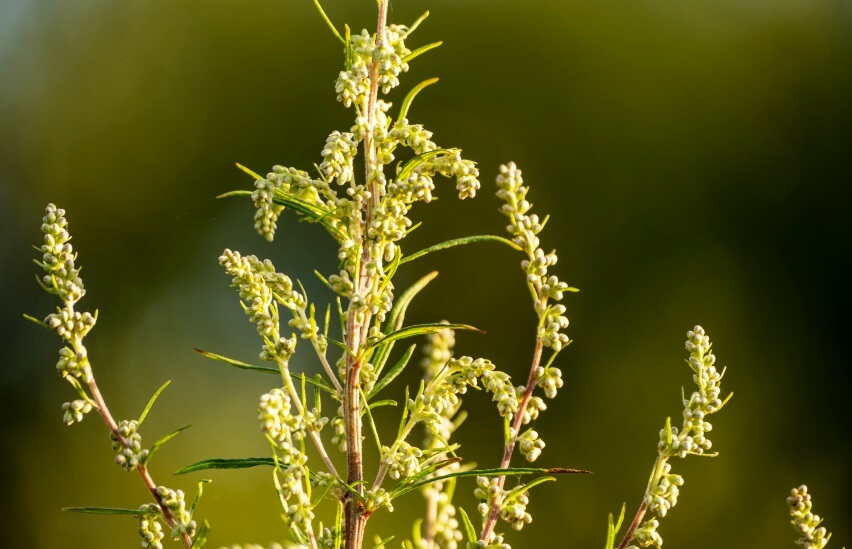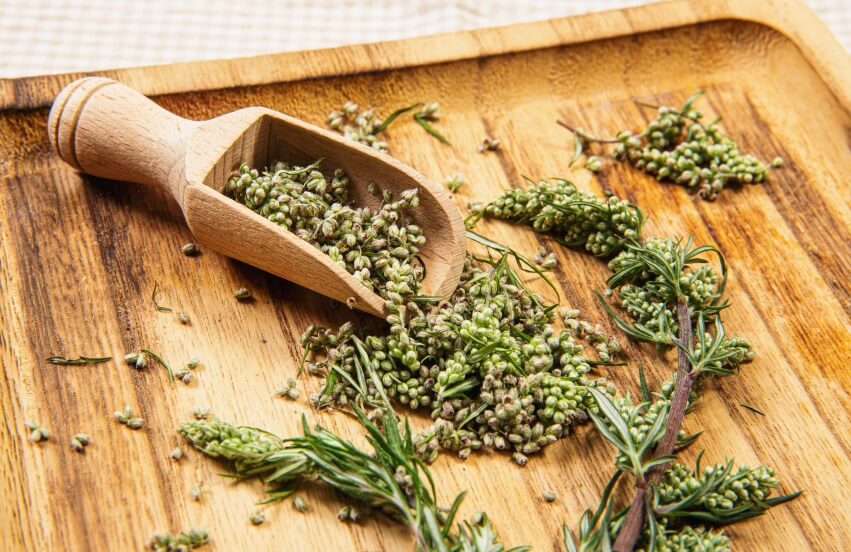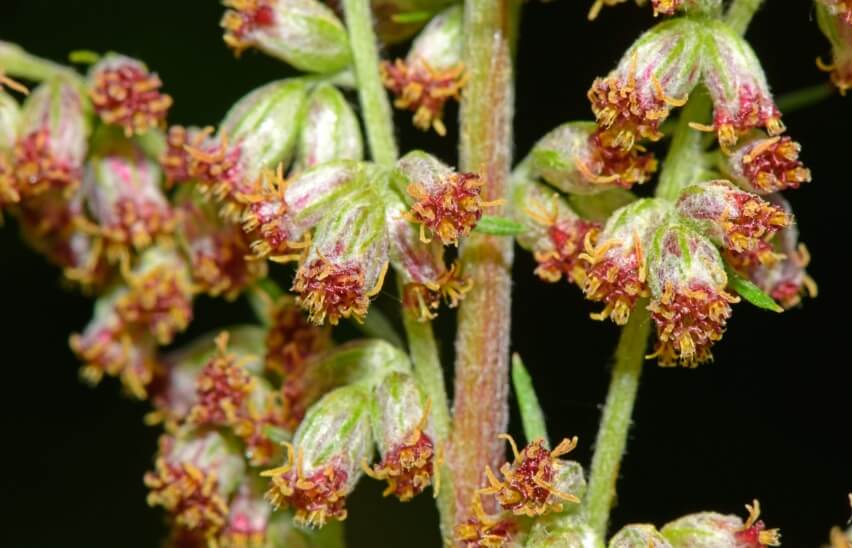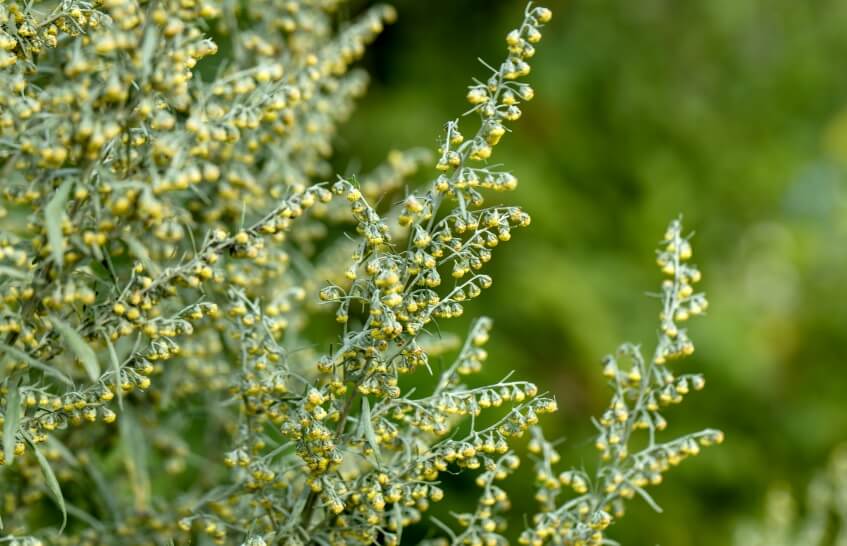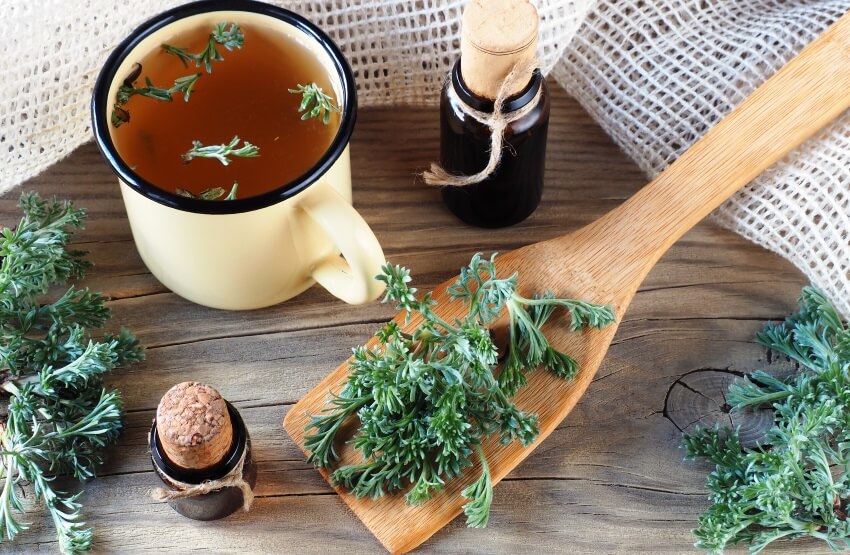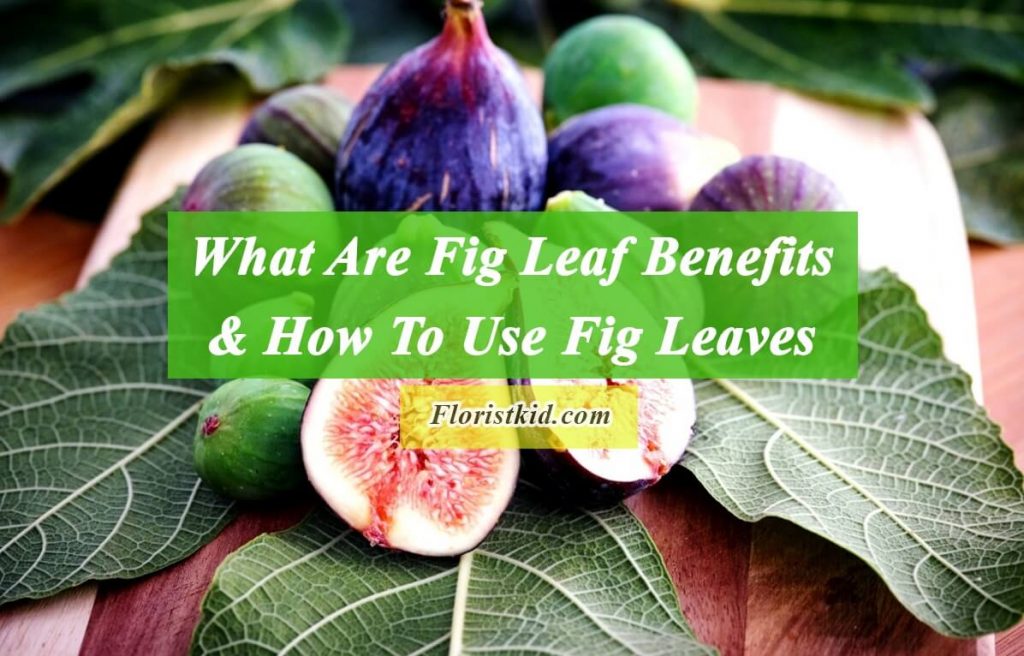Mugwort has been used as an ingredient in both Western and Eastern cuisines. Its aromatic and slightly bitter leaves can add a wonderful fragrance and flavor to dishes, especially when used to season meat, fish, and chicken.
In addition to its culinary uses, Mugwort holds a special place in traditional medicine in Hindu, Japanese, Chinese, and Korean cultures. Traditionally, Mugwort was highly regarded as a medicinal plant, to the extent that it was once known as the ‘mother of herbs’ during the Middle Ages due to its significant importance in herbal medicine [1].
In this article, we’ll delve into the nutritional value and health benefits of Mugwort plant and Mugwort tea. We will also look at possible mugwort side effects and how to make mugwort tea at the end of the post.
If you are interested in this topic , you can also read
<<ًQuince seeds Benefits>> and <<Sausage Tree Benefits>> articles.
About Mugwort
Mugwort is a fragrant flowering plant known scientifically as Artemisia vulgaris. It belongs to the Artemisia family and goes by various names like riverside wormwood, felon herb, chrysanthemum weed, wild wormwood, old Uncle Henry, sailor’s tobacco, naughty man, old man, and St. John’s plant.
You can find this plant in Europe, Asia, North Africa, and Alaska, and it has also become naturalized in North America. Mugwort is a resilient plant that thrives in places with low-nitrogen soil, such as abandoned areas, roadsides, and other neglected or uncultivated areas [2].
Mugwort Nutrition
Chemical Composition Of Mugwort
The diverse uses of Mugwort plant species are made possible by its abundant chemical composition, which notably includes essential oils, flavonoids, sesquiterpene lactones, phenolic acids, coumarins, and various other types of compounds [3]. A wide array of metabolites, including sesquiterpenoids, lactones, flavonoids, coumarins, phenolic acids, sterols, polyacetylenes, carotenoids, vitamins, and cyanogenic glycosides, can be found in this plant. These compounds contribute to the Mugwort plant’s medicinal uses.
Biological Properties Of Mugwort
The flavonoid compounds present in Mugwort can account for its anti-diabetic, antioxidant, and anti-inflammatory properties. Numerous studies have also validated its antioxidant, hepatoprotective (liver-protecting), antispasmolytic (muscle-relaxing), antinociceptive (pain-relieving), estrogenic (related to estrogen), cytotoxic (cell-killing), antibacterial, and antifungal effects.
Furthermore, the presence of essential oil is another significant aspect of this plant, making it a valuable raw material in the cosmetic industry [3].
Mugwort Plant Health Benefits
Some of the main health benefits of Mugwort plants are as below [3]:
Relieving Pain And Fever
Mugwort has historical use as a painkiller, and its healing properties were documented as far back as the 1st century A.D. in the medical writings of Dioscorides in his work called “Materia Medica.”
Additionally, Mugwort was applied externally to treat wounds, address gout, alleviate leg fatigue hip and knee osteoarthritis, and even as a remedy for fever. Its applications extend to external uses, where it is prepared as infusions to alleviate rheumatic and leg pains and for sitz baths to alleviate hemorrhoids.
Helping Gastrointestinal Issues
Mugwort fragrant and astringent characteristics render it valuable for promoting the release of digestive fluids. The astringent elements found in the leaves confer upon it the ability to enhance liver performance and the excretion of bile. When your body generates an ample supply of bile, your digestion improves, particularly in the processing of fats, and you can more effectively assimilate nutrients from your meals. Mugwort has also been historically employed to invigorate a lackluster appetite and alleviate issues like constipation and indigestion.
In addition to the mentioned Mugwort tea benefits, Mugwort tea has been used for other gastrointestinal issues such as stomach pain, diarrhea, and intestinal colic. It is also employed in the treatment of conditions such as appetite loss, achlorhydria (lack of stomach acid), gastritis, and flatulence.
Mugwort For Internal Issues
The Mugwort plant was historically thought to possess warming and desiccating properties, which led to its endorsement for managing urological ailments such as dysuria (uncomfortable urination) and nephrolithiasis (kidney stones). Its medicinal applications also encompassed the treatment of conditions related to the spleen and liver. The range of therapeutic uses for Artemisia vulgaris was broadened to encompass issues like enlarged and swollen spleens, combating liver congestion, and addressing discomfort in the cold lower abdomen.
Mugwort For Nervous Disorder
One of the amazing health benefits of mugwort plant is its calming attributes. It has been harnessed as a nervine to soothe the nervous system and alleviate stress. This is why this medicinal plant has historically found application in managing nervous system disorders such as insomnia, epilepsy, depression, and the effects of prolonged exposure to excessive stress.
Interestingly, you can also experience its effects without ingesting it internally. By creating a Mugwort dream pillow, you can place dried leaves and flower tops in a small muslin bag and slip it inside your pillow at night.
This plant is also considered a substitute for cannabis. When being smoked, it exhibits mild intoxicating properties and strong relaxing properties.
Mugwort Essential Oil
The essential oil derived from Artemisia vulgaris finds utility in insect repellents and fumigants. Additionally, it exhibits antibacterial and antifungal attributes, expanding its practical uses. Certain individuals even apply Mugwort lotion directly onto the skin to alleviate itching resulting from burn scars. However, it’s worth noting that there is limited scientific research to substantiate these claims.
Mugwort Benefits For Females
Mugwort derives its botanical name from the Greek Goddess Artemis, who is associated with nature, the moon, and women of childbearing age. This connection hints at its traditional uses in supporting menstrual cycles and its beneficial effects on menstruation- and pregnancy-related ailments.
Mugwort is renowned for its potential to support women’s reproductive health, as it is commonly employed in herbalism for individuals experiencing delayed or absent menstrual cycles. It can assist in kickstarting a delayed period by improving blood circulation to the pelvic region, imparting warmth, reducing stagnation, relieving menstrual cramps, and alleviating discomfort [3].
The Benefits of Mugwort tea and plant extend beyond just young women, as a significant portion of the supporting evidence comes from a small study demonstrating that Mugwort was effective in reducing both the frequency and severity of hot flashes experienced by elderly women.
Mugwort Plant Side-Effects
A Potential Allergen
In the 20th century, scientific laboratory analyses of Artemisia vulgaris revealed its high potential for causing allergies. This led to the conclusion that the herb is not suitable for medicinal use and should only be used in culinary applications, primarily in the kitchen, and not as a remedy.
Moreover, instances of anaphylactic shock have been observed in patients who swallowed its pollen. This plant species is also considered a major trigger for hay fever and allergic asthma in regions of northern Europe, North America, and parts of Asia [4].
May Be risky For Pregnant Women
It’s important to note that Mugwort is also recommended for other purposes, such as relieving hypertension. In some cases, it has also been used to induce labor or miscarriage, so its use should be approached with caution and under the guidance of a healthcare professional [3].
Other Possible Side-Effects
When consumed in large doses, Artemisia vulgaris can lead to adverse effects, including nausea, vomiting, and potential damage to the nervous system. There have also been reported cases of hypertension associated with its use. It’s crucial to exercise caution when using Mugwort, especially for individuals with diabetes, as it can elevate blood glucose levels [3].
How To Make Mugwort Tea?
Mugwort tea is made by steeping the fresh or dried leaves and flowering tops of the Artemisia vulgaris plant. Apart from Mugwort tea’s health benefits, Mugwort is famous as a “dreaming herb.” The Mugwort tea has a slightly bitter taste with some pungency, mainly because of the essential oils it contains. The combination of bitterness and aromatic qualities of Mugwort tea provides a unique blend of cooling and drying effects on the body’s tissues, while the aromatics bring warmth and dispersion.
To prepare mugwort tea, take one teaspoon (about 1.2 grams) of dried aerial parts of the plant and add them to one cup of boiling water. For the best results, steep the tea for about five minutes with the lid on the cup to capture the volatile oils, as they may evaporate if left uncovered [5].
How Much Mugwort Tea To Drink Per Day?
You can enjoy a cup of mugwort tea up to three times a day, but it’s advisable to limit its use to the short term, not exceeding two weeks [6].



